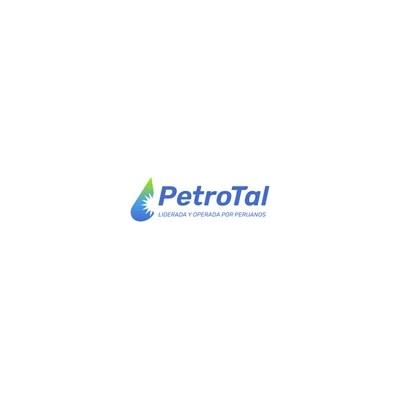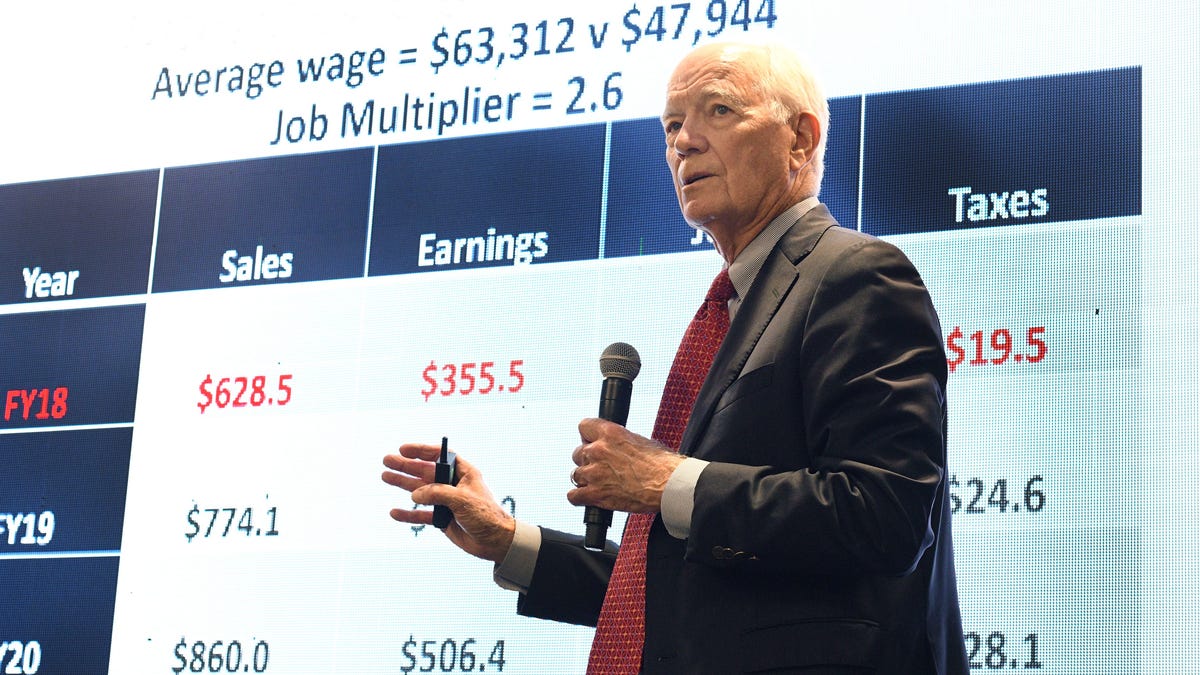Finance
PetroTal Announces Q2 2024 Financial and Operating Results

Q2 2024 average sales and production of 18,050 bopd and 18,290 bopd, respectively
Generated Q2 2024 free funds flow of $36 million (7% quarterly yield)
Exited quarter with $96 million in total cash
Declaring dividend of $0.015/share payable Sept 13, 2024
Board changes
Calgary, Alberta and Houston, Texas–(Newsfile Corp. – August 8, 2024) – PetroTal Corp. (TSX: TAL) (AIM: PTAL) (OTCQX: PTALF) (“PetroTal” or the “Company”) is pleased to report its operating and financial results for the three and six months ended June 30, 2024.
Selected financial and operational information is outlined below and should be read in conjunction with the Company’s unaudited consolidated financial statements and management’s discussion and analysis (“MD&A”) for the three and six months ended June 30, 2024, which are available on SEDAR+ at www.sedarplus.ca and on the Company’s website at www.PetroTal‐Corp.com. All amounts herein are in United States dollars unless otherwise stated.
Selected Q2 2024 Highlights
-
Average Q2 2024 production and sales of 18,290 and 18,050 barrels (“bbls”) of oil per day (“bopd”), respectively, which included a brief river blockade;
-
Generated Q2 2024 EBITDA(1) and free funds flow(1) of $69.5 million ($42.31/bbl) and $36.3 million ($22.11/bbl), respectively;
-
Exited Q2 2024 in a strong cash position with $95.9 million in total cash ($84.1 million unrestricted), with over $93.2 million in current receivables due subsequent to June 30, 2024;
-
In early May 2024, PetroTal signed an acquisition agreement to acquire a 100% working interest in Peru’s Block 131, including the producing Los Angeles field for a purchase price of $5 million, subject to closing adjustments and with an effective date of January 1, 2024;
-
Successfully drilled two new oil wells in the quarter. Well 19H has averaged over 6,860 bopd over its initial 30 days, placing it in the Company’s top five initial rate wells and achieving payout in approximately 40 days;
-
Delivered strong operating cost metrics with lifting and variable transportation costs under $8.00/bbl in the quarter, slightly higher than Q1 2024, and generating a near 78% net operating income margin in the quarter;
-
Capital expenditures (“Capex”) totaled $38.9 million in Q2 2024 and were focused on drilling wells 18H and 19H;
-
Completed all regulatory approvals for the Company’s Oleoducto de Crudos Pesados Oil Pipeline (“OCP”) route to market in Ecuador, onto which oil loading into barges was subsequently commenced in mid July 2024. Actual final sale of the pilot oil is expected in October 2024;
-
Delivered strong Q2 2024 net income of $35.4 million ($0.04/share); and,
-
Paid total dividends of $0.015/share and repurchased 1.2 million common shares in Q2 2024, representing approximately $15 million of total capital returned to shareholders (approximately 3% of June 30, 2024, market capitalization).
(1) Non-GAAP (defined below) measure that does not have any standardized meaning prescribed by GAAP and therefore may not be comparable with the calculation of similar measures presented by other entities. See “Selected Financial Measures” section.
Manuel Pablo Zuniga-Pflucker, President and Chief Executive Officer, commented:
“Our Q2 2024 operating and financial results were robust and Q3 and Q4 are now underpinned by strong drilling results this quarter. The 19H well was initially producing in excess of 8,000 bopd despite being designed with a shorter horizontal section compared to previous drills and has now averaged over 6,800 bopd over the last 30 days.
In addition, we are extremely excited about our formal route activation through the OCP. Having completed all the regulatory approvals, the Company is now in a position to further diversify its oil sales routes and to allow for offtake optionality during the dry season. Activating additional routes to market is a priority for the Company and we look forward to sending further updates in the fall of 2024.
We are expecting to close the Block 131 acquisition later this year becoming the Company’s first diversified production stream with the expectation of significantly increasing its light oil production profile in 2025.”
Selected Financial Highlights
|
Three Months Ended |
Six Months Ended |
|||||||
|
Q2-2024 |
Q1-2024 |
Q2-2024 |
Q2-2023 |
|||||
|
$/bbl |
$ 000 |
$/bbl |
$ 000 |
$/bbl |
$ 000 |
$/bbl |
$ 000 |
|
|
Average Production (bopd) |
18,290 |
18,518 |
18,404 |
15,631 |
||||
|
Average sales (bopd) |
18,050 |
18,347 |
18,198 |
15,567 |
||||
|
Total sales (bbls)(1) |
1,642,578 |
1,669,537 |
3,312,115 |
2,817,573 |
||||
|
Average Brent price |
$83.87 |
$81.01 |
$82.46 |
$79.73 |
||||
|
Contracted sales price, gross |
$83.92 |
$81.14 |
$82.35 |
$78.86 |
||||
|
Tariffs, fees and differentials |
($21.15) |
($20.89) |
($20.86) |
($20.75) |
||||
|
Realized sales price, net |
$62.76 |
$60.25 |
$61.49 |
$58.11 |
||||
|
Oil revenue(1) |
$62.76 |
$103,086 |
$60.25 |
$100,583 |
$61.49 |
$203,669 |
$58.11 |
$163,723 |
|
Royalties(2) |
$6.08 |
$9,991 |
$5.69 |
$9,500 |
$5.88 |
$19,491 |
$5.37 |
$15,137 |
|
Operating expense |
$6.10 |
$10,023 |
$5.56 |
$9,278 |
$5.83 |
$19,301 |
$4.78 |
$13,454 |
|
Direct Transportation: |
|
|
||||||
|
Diluent |
$1.16 |
$1,898 |
$0.94 |
$1,567 |
$1.73 |
$5,740 |
$1.07 |
$3,009 |
|
Barging |
$0.58 |
$951 |
$0.60 |
$1,005 |
$0.02 |
$54 |
$0.64 |
$1,802 |
|
Diesel |
$0.11 |
$186 |
$0.05 |
$80 |
($0.03) |
($106) |
$0.08 |
$233 |
|
Storage |
$0.01 |
$12 |
($0.27) |
($457) |
($0.13) |
($445) |
$0.00 |
$0 |
|
Total Transportation |
$1.86 |
$3,047 |
$1.32 |
$2,195 |
$1.59 |
$5,243 |
$1.79 |
$5,044 |
|
Net Operating Income(3,4) |
$48.72 |
$80,025 |
$47.68 |
$79,610 |
$48.19 |
$159,634 |
$46.17 |
$130,088 |
|
G&A |
$6.41 |
$10,528 |
$4.83 |
$8,071 |
$5.61 |
$18,597 |
$4.30 |
$12,107 |
|
EBITDA(3) |
$42.31 |
$69,497 |
$42.85 |
$71,539 |
$42.58 |
$141,037 |
$41.87 |
$117,981 |
|
Adjusted EBITDA(3,5) |
$45.78 |
$75,201 |
$43.15 |
$72,048 |
$44.46 |
$147,250 |
$47.44 |
$133,670 |
|
Net Income |
$21.55 |
$35,405 |
$28.52 |
$47,619 |
$25.07 |
$83,028 |
$22.58 |
$63,614 |
|
Basic Shares Outstanding (000) |
914,196 |
914,104 |
914,196 |
922,306 |
||||
|
Market Capitalization(6) |
$504,152 |
$511,898 |
$504,152 |
$433,484 |
||||
|
Net Income/Share ($/share) |
$0.04 |
$0.05 |
$0.09 |
$0.069 |
||||
|
Capex |
$38,867 |
$30,352 |
$69,219 |
$59,286 |
||||
|
Free Funds Flow(3) (7) |
$22.12 |
$36,334 |
$24.97 |
$41,696 |
$23.56 |
$78,030 |
$26.40 |
$74,384 |
|
% of Market Capitalization(6) |
7.2% |
8.2% |
15.5% |
17.2% |
||||
|
Total Cash(8) |
$95,859 |
$85,151 |
$95,859 |
$92,552 |
||||
|
Net Surplus (Debt) (3) (9) |
$50,324 |
$55,522 |
$50,324 |
$97,523 |
||||
The table below summarizes PetroTal’s comparative financial position.
-
Approximately 89% of Q2 2024 sales were through the Brazilian route vs 87% in Q1 2024.
-
Royalties at year to date June 30, 2024 and March 31, 2024 include the impact of the 2.5% community social trust.
-
Non-GAAP (defined below) measure that does not have any standardized meaning prescribed by GAAP and therefore may not be comparable with the calculation of similar measures presented by other entities. See “Selected Financial Measures” section.
-
Net operating income represents revenues less royalties, operating expenses, and direct transportation.
-
Adjusted EBITDA is net operating income less general and administrative (“G&A”) and plus/minus realized derivative impacts.
-
Market capitalization for Q2, 2024, Q1 2024 and Q2 2023, assume share prices of $0.53, $0.56, and $0.45 respectively on the last trading day of the quarter.
-
Free funds flow is defined as adjusted EBITDA less capital expenditures. See “Selected Financial Measures” section.
-
Includes restricted cash balances.
-
Net Surplus (Debt) = Total cash + all trade and net VAT receivables + short and long term net derivative balances – total current liabilities – long term debt – non current lease liabilities – net deferred tax – other long term obligations.
Q2 2024 Financial Variance Summary
|
Three months ended |
Six months ended |
||||||||||||||||
|
US$/bbl Variance Summary |
Q2 2024 |
|
Q1 2024 |
Variance |
Q2 2024 |
Q2 2023 |
Variance |
||||||||||
|
Oil Sales (bopd) |
18,050 |
|
18,347 |
(297) |
18,198 |
15,567 |
2,631 |
||||||||||
|
Contracted Brent Price |
$83.92 |
|
$81.14 |
$2.78 |
$82.35 |
$78.86 |
$3.49 |
||||||||||
|
Realized Sales Price |
$62.76 |
|
$60.25 |
$2.51 |
$61.49 |
$58.11 |
$3.38 |
||||||||||
|
Royalties |
$6.08 |
|
$5.69 |
$0.39 |
$5.88 |
$5.37 |
$0.51 |
||||||||||
|
Total OPEX and Transportation |
$7.96 |
|
$6.88 |
$1.08 |
$7.42 |
$6.57 |
$0.85 |
||||||||||
|
Net Operating Income(1,2) |
$48.72 |
|
$47.68 |
$1.04 |
$48.19 |
$46.17 |
$2.02 |
||||||||||
|
G&A |
$6.41 |
|
$4.83 |
$1.58 |
$5.61 |
$4.30 |
$1.31 |
||||||||||
|
EBITDA |
$42.31 |
|
$42.85 |
($0.54) |
$42.58 |
$41.87 |
$0.71 |
||||||||||
|
Net Income |
$21.55 |
|
$28.52 |
($6.97) |
$25.07 |
$22.58 |
$2.49 |
||||||||||
|
Free Funds Flow(1,3) |
$22.12 |
|
$24.97 |
($2.85) |
$23.56 |
$26.40 |
$2.84 |
||||||||||
Q2 2024 Financial Variance Commentary
-
Near-flat sales volume compared to prior quarter with six months ended sales volumes up 17% from Q2 2023;
-
Higher lifting costs in the quarter, driven by higher contracted service and erosion control opex allocations compared to previous quarter. Higher diluent costs in the quarter due to higher transportation costs of diluent;
-
Capital spending increased by 28% to $38.9 million in the quarter from the prior quarter of $30.2 million due to increased drilling activity;
-
Strong Q2 2024 production and favorable oil pricing generated free funds flow per barrel in the quarter of approximately $22.1/bbl compared to $24.9/bbl in Q4 2023;
-
Liquidity increased 13% in Q2 2024 compared to Q1 2024, with total cash increasing by approximately $11 million to $96 million despite transferring nearly $12 million of restricted cash to the social trust fund; and,
-
PetroTal maintained a strong balance sheet in Q2 2024 with no long term bank debt and a net surplus(1,4) of $50 million, and inclusive of a $65 million net deferred tax liability.
-
See “Selected Financial Measures”.
-
Net operating income represents revenues less royalties, operating expenses, and direct transportation.
-
Free funds flow is defined as adjusted EBITDA less capital expenditures.
-
Net Surplus (Debt) = Total cash + all trade and net VAT receivables + short and long term net derivative balances – total current liabilities – long term debt – non current lease liabilities – net deferred tax – other long term obligations.
Additional Financial and Operating Updates in, and subsequent to June 30, 2024
Operations Update
Corporate production averaged 20,034 bopd in July 2024, with contributions from the 19H and 18H wells, which averaged 5,167 and 2,278 bopd, respectively. Dry river season indicators are at the moment at lower levels than 2023. Notwithstanding, production and sales constraints from August through October 2024 are kept as originally budgeted thanks to the increased barge fleet size. Q3 2024 production guidance is reiterated at approximately 13,000 bopd.
With expected low river conditions in Q3 and early Q4, the Company is reaffirming production guidance of 16,500 to 17,500 bopd for 2024. Assuming a full year 2024 Brent price of $82/bbl, full year 2024 EBITDA is now expected to be in the range of $200 to $240 million. Previous 2024 EBITDA guidance was $200 million.
PetroTal completed drilling 5WD on July 22, 2024, the Company’s fourth water disposal well with injectivity tests at approximately 50,000 barrels of water per day (“bwpd”). The 5WD well is already online at a total cost of $10.7 million and below its budget of $12.7 million. Once the three high pressure pumps and the additional 50,000 barrels of water tank are fully tied in, the total field water disposal capacity will reach an estimated 170,000 bwpd by year end from the current 110,000 bwpd.
Drilling commenced on Well 20H on July 26, 2024 with an estimated cost of $13.7 million. Well completion and first production are estimated by late Q3 2024.
In order to minimize rig standby fees and maximize production thanks to the increased water handling capacity heading into the next wet season, PetroTal is accelerating capex. Following the completion of the 20H well, PetroTal will drill and complete wells 21H, 22H and 23H at Bretana by the end of Q1 2025. As a result, total estimated 2024 capital spend is now expected to fall within a range of $150 to $175 million, from a range of $150 to $160 million previously.
ONP Update
On July 17, 2024 the Company was notified that approximately 322,000 barrels of Northern Peruvian Pipeline (“ONP”) oil located in section II of the line was successfully pumped to the Bayovar port for tender and eventual sale. When the tender process is completed by Petroperu, it will trigger a true up payment to PetroTal if the realized price for those barrels is greater than the oil’s cost base. The average cost base of the Company’s 2.2 million barrels of oil in the ONP is approximately $72.5/bbl Brent. Including the recent oil movement, as of the end of July, there are approximately 1.88 million barrels remaining in the ONP.
Cepsa Acquisition Update
Since the signing of the acquisition agreement in early May 2024, PetroTal’s integration team has been progressing on the necessary regulatory approvals required to close the acquisition. The first milestone was achieved in late June 2024 with an approval from Perupetro. Approval into supreme decree is still estimated in Q4 2024. The Block 131 assets have been producing between 800 and 1,000 bopd and generating positive EBITDA per month since the transaction effective date of January 1, 2024. It is the Company’s intention to optimize production starting next year.
JP Morgan Line of Credit
In May 2024, PetroTal was able to secure a $20 million line of credit with JP Morgan to further enhance short term liquidity. The line of credit is for 120 days at market variable interest rates with payment due in full at the end of the term. Including the previously announced $20 million line of credit with Banco de Credito del Peru, the Company has approximately $40 million of undrawn short term credit capacity.
Share Buyback Plan Update
PetroTal’s updated liquidity strategy prioritises dividend sustainability, potential Block 131 development, and erosion control working capital requirements. In Q2 2024, the Company set additional constraints on the share buyback program that better align daily buyback execution with lower share prices. As a result, a decreased volume of buybacks was realized in Q2 2024 compared to previous quarters. The Company will continue to monitor buyback levels.
Q3 2024 dividend declaration
A cash dividend of USD$0.015 per common share has been declared to be paid in Q3 2024. This approximately represents a 12% annualized yield based on the current share price and includes the recurring USD$0.015 per common share amount, without the liquidity sweep this quarter due to anticipated heavier cash requirements over the next two quarters. The total dividend of USD$0.015 per common share will be paid according to the following timetable:
-
Record date: August 30, 2024
-
Payment date: September 13, 2024
The dividend is an eligible dividend for the purposes of the Income Tax Act (Canada) and investors should note that the excess liquidity sweep portion of all future dividends may be subject to fluctuations up or down in accordance with the Company’s return of capital policy. Shareholders outside of Canada should contact their respective brokers or registrar agents for the appropriate tax election forms regarding this dividend.
Director Resignation
Effective August 8, 2024, Dr. Roger Tucker has resigned as a Company director so he can focus on leading the growth of Africa Oil. Dr. Tucker has been a board member since the end of 2019 when the Company started its successful horizontal well drilling campaign and has made many other significant technical contributions to our success at Bretana. PetroTal would like to thank Dr. Tucker for his contributions to the company and wishes him well in his future endeavors.
Q2 2024 Webcast Link for August 8, 2024
PetroTal will host a webcast for its Q2 2024 results on August 8, 2024 at 9am CT (Houston) and 3pm BST (London). Please see the link below to register.
https://stream.brrmedia.co.uk/broadcast/666ae961ee30aaf32018b5c3
ABOUT PETROTAL
PetroTal is a publicly traded, tri‐quoted (TSX: TAL) (AIM: PTAL) (OTCQX: PTALF) oil and gas development and production Company domiciled in Calgary, Alberta, focused on the development of oil assets in Peru. PetroTal’s flagship asset is its 100% working interest in Bretana oil field in Peru’s Block 95 where oil production was initiated in June 2018. In early 2022, PetroTal became the largest crude oil producer in Peru. The Company’s management team has significant experience in developing and exploring for oil in Peru and is led by a Board of Directors that is focused on safely and cost effectively developing the Bretana oil field. It is actively building new initiatives to champion community sensitive energy production, benefiting all stakeholders.
For further information, please see the Company’s website at www.petrotal-corp.com, the Company’s filed documents at www.sedarplus.ca, or below:
Camilo McAllister
Executive Vice President and Chief Financial Officer
Cmcallister@PetroTal-Corp.com
T: (386) 383 1634
Manolo Zuniga
President and Chief Executive Officer
Mzuniga@PetroTal-Corp.com
T: (713) 609-9101
PetroTal Investor Relations
InvestorRelations@PetroTal-Corp.com
Celicourt Communications
Mark Antelme / Jimmy Lea
petrotal@celicourt.uk
T : 44 (0) 20 7770 6424
Strand Hanson Limited (Nominated & Financial Adviser)
Ritchie Balmer / James Spinney / Robert Collins
T: 44 (0) 207 409 3494
Stifel Nicolaus Europe Limited (Joint Broker)
Callum Stewart / Simon Mensley / Ashton Clanfield
T: +44 (0) 20 7710 7600
Peel Hunt LLP (Joint Broker)
Richard Crichton / David McKeown / Georgia Langoulant
T: +44 (0) 20 7418 8900
READER ADVISORIES
FORWARD-LOOKING STATEMENTS: This press release contains certain statements that may be deemed to be forward-looking statements. Such statements relate to possible future events, including, but not limited to, oil production levels and guidance. All statements other than statements of historical fact may be forward-looking statements. Forward-looking statements are often, but not always, identified by the use of words such as “anticipate”, “believe”, “expect”, “plan”, “estimate”, “potential”, “will”, “should”, “continue”, “may”, “objective” and similar expressions. Without limitation, this press release contains forward-looking statements pertaining to: PetroTal’s drilling, completions, workovers and other activities; anticipated future production and revenue; drilling plans including the timing of drilling, commissioning, and startup; PetroTal’s 2024 guidance; expectations regarding the strategic acquisition of CEPSA Peruana, S.A.C (the “Acquisition”), including in respect of its terms, timing, benefits and closing (including that it will close pending regulatory approvals); the Company’s expectation to meet Q3 2024 production guidance in face of production and sales constraints in August and September of Q3; expectations of timing to realize revenues from the Company’s OCP oil route to market; expectations regarding the tender process and sale of the ONP oil; expectations surrounding PetroTal’s short term receivables and when they become due; Q3 2024 dividend declaration of $0.015/share payable September 13, 2024 and expectations in respect of thereof (including timing); the renewal of the share buyback plan; expectations surrounding PetroTal’s new leadership team; and average 2024 production. The forward-looking statements are based on certain key expectations and assumptions made by the Company, including, but not limited to, expectations and assumptions concerning the ability of existing infrastructure to deliver production and the anticipated capital expenditures associated therewith, the ability to obtain and maintain necessary permits and licenses, the ability of government groups to effectively achieve objectives in respect of reducing social conflict and collaborating towards continued investment in the energy sector, reservoir characteristics, recovery factor, exploration upside, prevailing commodity prices and the actual prices received for PetroTal’s products, including pursuant to hedging arrangements, the availability and performance of drilling rigs, facilities, pipelines, other oilfield services and skilled labour, royalty regimes and exchange rates, the impact of inflation on costs, the application of regulatory and licensing requirements, the accuracy of PetroTal’s geological interpretation of its drilling and land opportunities, current legislation, receipt of required regulatory approval, the success of future drilling and development activities, the performance of new wells, future river water levels, the Company’s growth strategy, general economic conditions and availability of required equipment and services. Although the Company believes that the expectations and assumptions on which the forward-looking statements are based are reasonable, undue reliance should not be placed on the forward-looking statements because the Company can give no assurance that they will prove to be correct. Since forward-looking statements address future events and conditions, by their very nature they involve inherent risks and uncertainties. Actual results could differ materially from those currently anticipated due to a number of factors and risks. These include, but are not limited to, risks associated with: counterparty risk to closing the Acquisition and unforeseen difficulties in integrating the assets pursuant to such acquisition into PetroTal’s operations; incorrect assessments of the value of benefits to be obtained from acquisitions and exploration and development programs (including the Acquisition); the oil and gas industry in general (e.g., operational risks in development, exploration and production; delays or changes in plans with respect to exploration or development projects or capital expenditures; the uncertainty of reserve estimates; the uncertainty of estimates and projections relating to production, costs and expenses; and health, safety and environmental risks), commodity price volatility, price differentials and the actual prices received for products, exchange rate fluctuations, legal, political and economic instability in Peru, access to transportation routes and markets for the Company’s production, changes in legislation affecting the oil and gas industry and uncertainties resulting from potential delays or changes in plans with respect to exploration or development projects or capital expenditures; changes in the financial landscape both domestically and abroad, including volatility in the stock market and financial system; and wars (including Russia’s war in Ukraine and the Israeli-Hamas conflict). Please refer to the risk factors identified in the Company’s most recent annual information form and MD&A which are available on SEDAR+ at www.sedarplus.ca. The forward-looking statements contained in this press release are made as of the date hereof and the Company undertakes no obligation to update publicly or revise any forward-looking statements or information, whether as a result of new information, future events or otherwise, unless so required by applicable securities laws.
OIL REFERENCES: All references to “light oil” in this press release mean “light crude oil” as defined in NI 51-101. All references to “heavy oil” in this press release mean “heavy crude oil” as defined in NI 51-101. All references to Brent indicate Intercontinental Exchange (“ICE”) Brent.
SHORT TERM RESULTS: References in this press release to peak rates, initial rates, production rates since inception, current production rates, and other short-term production rates are useful in confirming the presence of hydrocarbons, however such rates are not determinative of the rates at which such wells will commence production and decline thereafter and are not indicative of long-term performance or of ultimate recovery. While encouraging, readers are cautioned not to place reliance on such rates in calculating the aggregate production of PetroTal. The Company cautions that such results should be considered to be preliminary.
SPECIFIED FINANCIAL MEASURES: This press release includes various specified financial measures, including non-GAAP financial measures, non-GAAP financial ratios and capital management measures as further described herein. These measures do not have a standardized meaning prescribed by generally accepted accounting principles (“GAAP”) and, therefore, may not be comparable with the calculation of similar measures by other companies. Management uses these non- GAAP measures for its own performance measurement and to provide shareholders and investors with additional measurements of the Company’s efficiency and its ability to fund a portion of its future capital expenditures. “Adjusted EBITDA” (non-GAAP financial measure) is calculated as consolidated net income (loss) before interest and financing expenses, income taxes, depletion, depreciation and amortization and adjusted for G&A impacts and certain non-cash, extraordinary and non-recurring items primarily relating to unrealized gains and losses on financial instruments and impairment losses, including derivative true-up settlements. PetroTal utilizes adjusted EBITDA as a measure of operational performance and cash flow generating capability. Adjusted EBITDA impacts the level and extent of funding for capital projects investments. Reference to EBITDA is calculated as net operating income less G&A. “Netback” (non-GAAP financial measure) equals total petroleum sales less quality discount, lifting costs, transportation costs and royalty payments calculated on a bbl basis. The Company considers netbacks to be a key measure as they demonstrate Company’s profitability relative to current commodity prices. “Net Operating Income” (non-GAAP financial measure) is calculated as revenues less royalties, operating expenses, and direct transportation. The Company considers Net Operating Income measure as they demonstrate Company’s profitability relative to current commodity prices. “Net surplus (debt)” (non-GAAP financial measure) is calculated by adding together total cash, trade and VAT receivables, and short and long-term net derivative balances less total current liabilities, long-term debt, non-current lease liabilities, deferred tax, and other long-term obligations. Net surplus (debt) is used by management to provide a more complete understanding of the Company’s capital structure and provides a key measure to assess the Company’s liquidity. “Free funds flow” (non-GAAP financial measure) is calculated as net operating income less G&A less exploration and development capital expenditures less realized derivative gains/losses and is calculated prior to all debt service, taxes, lease payments, hedge costs, factoring, and lease payments. Management uses free funds flow to determine the amount of funds available to the Company for future capital allocation decisions. Please refer to the MD&A for additional information relating to specified financial measures.
Eligible Dividend: An eligible dividend is one which is characterized as such by the dividend-paying corporation for Canadian residents. The primary benefit of an eligible dividend is that it benefits from an enhanced gross-up and credit regime at the shareholder level (i.e., the shareholder pays less tax on eligible dividends than non-eligible dividends). This is meant to compensate for the higher general corporate tax rate paid by non-CCPC’s on their income and generally preserve integration of Canada’s tax rates. As an example, for federal income tax purposes the gross-up rate for eligible dividends is 38% (as compared to 15% for non-eligible dividends) such that the amount of the dividend is multiplied by 1.38 to determine the taxable income to the shareholder. The dividend tax credit for eligible dividends is additionally increased to 6/11 (or 15.02%), as compared to 9/13 (9%) for non-eligible dividends, to offset the greater income inclusion to the taxpayer. Each province provides similar relief on the tax they would otherwise levy on the dividends, although the effective gross-up and credit differs by province.
FOFI DISCLOSURE: This press release contains future-oriented financial information and financial outlook information (collectively, “FOFI”) about PetroTal’s prospective results of operations and production results, free funds flow, cost estimates, tax rates, budget, EBITDA, netback, dividends, capex, 2024 average production and production and sales targets, shareholder returns and components thereof, including pro forma the completion of the Acquisition, all of which are subject to the same assumptions, risk factors, limitations and qualifications as set forth in the above paragraphs. FOFI contained in this press release was approved by management as of the date of this press release and was included for the purpose of providing further information about PetroTal’s anticipated future business operations. PetroTal and its management believe that FOFI has been prepared on a reasonable basis, reflecting management’s best estimates and judgments, and represent, to the best of management’s knowledge and opinion, the Company’s expected course of action. However, because this information is highly subjective, it should not be relied on as necessarily indicative of future results. PetroTal disclaims any intention or obligation to update or revise any FOFI contained in this press release, whether as a result of new information, future events or otherwise, unless required pursuant to applicable law. Readers are cautioned that the FOFI contained in this press release should not be used for purposes other than for which it is disclosed herein. All FOFI contained in this press release complies with the requirements of Canadian securities legislation, including Canadian National Instrument 51-101 – Standards of Disclosure for Oil and Gas Activities. Changes in forecast commodity prices, differences in the timing of capital expenditures, and variances in average production estimates can have a significant impact on the key performance measures included in PetroTal’s guidance. The Company’s actual results may differ materially from these estimates.
To view the source version of this press release, please visit https://www.newsfilecorp.com/release/219200

Finance
Embedded Finance Propels Marqeta to Nearly $100 Billion in TPV | PYMNTS.com

Simply staying the course in today’s operating environment takes equal parts resilience and reinvention. That goes double for the FinTech sector, which is still recalibrating from its scale-chasing, zero-interest-rate years.
Finance
How AI can help detect warning signs of financial market stress
In a world of interconnected financial markets, policymakers and regulators face the complex task of identifying and addressing risks before they escalate into crises. The 2008-09 global crisis and recent episodes of market dysfunction highlight the need for early warning tools to detect vulnerabilities in real time. However, predicting financial market stress remains challenging, as traditional econometric models often fail to capture the complex, nonlinear dynamics and interconnectedness of modern financial systems.
Recent advances in artificial intelligence (AI) provide new tools to address these challenges. AI methods excel at analysing high-dimensional datasets and uncovering hidden patterns. While they are widely applied in asset pricing (Kelly et al. 2024), they are increasingly used for financial stability monitoring (Fouliard et al. 2021, du Plessis and Fritsche 2025). However, the ‘black box’ nature of AI models has limited their ability to generate actionable policy insights.
This article highlights recent research (Aldasoro et al. 2025, Aquilina et al. 2025) that advances the deployment of AI tools to anticipate financial market stress. These studies demonstrate the potential of AI to forecast market stress and dysfunction, offering both methodological innovations and actionable insights for policymakers by addressing the black-box issue.
The challenge of anticipating financial market stress
Financial market stress can take many forms, including liquidity shortages, price dislocations, and breakdowns in arbitrage relationships. Events such as the 1998 LTCM crisis, the 2008-09 global crisis, and the 2020 ‘dash for cash’ highlight the systemic risks posed by market dysfunction. These disruptions often begin in specific market segments, such as foreign exchange or money markets, but can quickly spread throughout the financial system, threatening its stability. Increasingly, stress has also shifted from traditional banks to non-bank financial intermediaries, reflecting the evolving nature of financial intermediation.
Traditional early warning systems, which were primarily designed to predict full-blown crises, have had mixed success. These models often suffer from high false positive rates and struggle to account for the nonlinear interactions and feedback loops that amplify shocks during periods of stress.
Machine learning (ML) offers a promising alternative, particularly for generating early warning signals. Unlike traditional models, ML algorithms can process vast datasets, identify complex relationships, and adapt to changing market conditions. The studies discussed here demonstrate the potential of these tools to anticipate market stress and provide policymakers with timely warnings.
Using machine learning to model the tail behaviour of financial market conditions
Aldasoro et al. (2025) present a novel framework for predicting financial market stress using machine learning. The study begins by constructing market condition indicators (MCIs) for three key US markets critical to financial stability: Treasury, foreign exchange, and money markets. These indicators (illustrated in Figure 1) capture dislocations in liquidity, volatility, and arbitrage conditions.
Figure 1 Market condition indices for US Treasury, foreign exchange, and money markets
Notes: This figure shows the five-day moving average of market condition indices for the US Treasury, money, and foreign exchange (FX) markets (upper, middle, and lower panels respectively). The sample period is from 01/01/2003 to 31/05/2024.
The paper employs random forest models, a popular tree-based machine learning algorithm, to forecast the full distribution of future market conditions. This approach uses multiple decision trees and averages their predictions, reducing the risk of overfitting. The results are noteworthy: random forest models outperform traditional time-series approaches, particularly in predicting tail risks over longer time horizons (up to 12 months). This is especially evident in forecasting foreign exchange market conditions (Figure 2).
Figure 2 Forecast accuracy of random forest and autoregressive models
Notes: This figure compares quantile losses between the random forest and autoregressive models based on out-of-sample predictions across forecast horizons. Negative values indicate better performance of the random forest model.
To address the black-box issue, the study uses Shapley value analysis to explain the main factors driving market stress predictions. The analysis reveals that macroeconomic expectations and uncertainty, particularly around monetary policy, are significant contributors to market vulnerability. Liquidity conditions and the state of the global financial cycle also play critical roles. This approach not only improves predictive accuracy but also provides actionable insights for policymakers, enabling them to respond proactively to the build-up of vulnerabilities.
Combining machine learning with large language models
Aquilina et al. (2025) take a different approach by integrating numerical data with textual information using large language models (LLMs). The study focuses on deviations from triangular arbitrage parity (TAP) in the euro-yen currency pair, a key indicator of dysfunction in the foreign exchange market. By combining recurrent neural networks (RNNs) with LLMs, the authors develop a two-stage framework to forecast market stress and identify its underlying drivers.
The recurrent neural network detects periods of heightened triangular arbitrage parity deviations up to 60 working days in advance, effectively predicting market dysfunctions that may occur within a one-month window. Out-of-sample testing on 3.5 years of data demonstrates the model’s practical value. For example, the model identified elevated risks before the March 2023 banking turmoil, despite being trained only on data up to the end of 2020 (Figure 3). However, it did not predict the market anomaly caused by the onset of COVID-19, as the event’s origins were external to the financial system.
Figure 3 Predictive accuracy of market dysfunction episodes
Notes: True data: 20-day average of the daily euro-yen triangular arbitrage parity difference with the US dollar as the vehicle currency, calculated on a minute-by-minute basis. The vertical red dashed line represents the end of the training period, end-2020; everything to the right of this line is considered pseudo out-of-sample.
To address the black-box challenge, Aquilina et al. (2025) develop a new architecture for recurrent neural network models that dynamically assigns weights to input variables. This allows the model to identify which indicators are most important for predicting future market conditions at any given time. These weights can then be fed into an LLM to search financial news and commentary for contextual information, helping to uncover potential triggers of market stress.
For instance, during the March 2023 banking turmoil, the model flagged elevated risks in euro liquidity and cross-currency arbitrage. Guided by these signals, the LLM identified news articles discussing tightening dollar funding conditions and rising geopolitical tensions. This targeted approach transforms opaque statistical forecasts into narrative explanations that policymakers can understand and act upon.
Policy implications and conclusions
While much more research into these issues is needed, these approaches show the promise of leveraging AI tools for financial stability monitoring and analysis.
- First, our work has shown that machine learning models are useful in forecasting future conditions of various markets.
- Second, the integration of numerical and textual data through machine learning and large language models provides a richer understanding of market dynamics. Policymakers can use these tools to monitor emerging risks in real time, combining quantitative forecasts with qualitative insights from financial news and commentary.
- Finally, the interpretability of machine learning models is critical for their adoption in policy settings. Techniques like Shapley value analysis and variable-specific weighting not only improve the transparency of forecasts but also provide actionable information about the drivers of market stress.
Overall, these approaches represent a significant step forward in leveraging AI to detect vulnerabilities in financial markets. By combining different methods, the studies offer novel tools for forecasting market stress and understanding its underlying drivers. However, these methods are not without limitations, such as the risk of overfitting and the need for substantial computational resources. Policymakers and regulators should invest in the necessary data and infrastructure to fully harness the potential of these tools.
References
Aldasoro, I, P Hördahl and S Zhu (2022), “Under pressure: market conditions and stress”, BIS Quarterly Review (19): 31–45.
Aldasoro, I, P Hördahl, A Schrimpf and X S Zhu (2025), “Predicting Financial Market Stress with Machine Learning”, BIS Working Papers No. 1250.
Aquilina, M, D Araujo, G Gelos, T Park and F Pérez-Cruz (2025), “Harnessing Artificial Intelligence for Monitoring Financial Markets”, BIS Working Papers No. 1291.
Du Plessis, E and U Fritsche (2025), “New forecasting methods for an old problem: Predicting 147 years of systemic financial crises”, Journal of Forecasting 44 (1): 3-40.
Fouliard, J, M Howell, H Rey and V Stavrakeva (2021), “Answering the queen: Machine learning and financial crises”, NBER Working Paper 28302.
Huang, W, A Ranaldo, A Schrimpf and F Somogyi (2025), “Constrained liquidity provision in currency markets”, Journal of Financial Economics 167: 104028.
Kelly, B, S Malamud and K Zhou (2024), “The Virtue of Complexity in Return Prediction”, Journal of Finance 79: 459-503.
Pasquariello, P (2014), “Financial Market Dislocations”, Review of Financial Studies 27(6): 1868–1914.
Finance
First Financial completes $2.2bn acquisition of Westfield Bancorp

US-based bank holding company First Financial Bancorp has completed its previously announced acquisition of Westfield Bancorp and its subsidiary, Westfield Bank.
In June, First Financial agreed to acquire Westfield Bancorp from Ohio Farmers Insurance Company in a cash-and-stock deal valued at $325m.

Access deeper industry intelligence
Experience unmatched clarity with a single platform that combines unique data, AI, and human expertise.
Find out more
With the addition of Westfield Bank, First Financial’s total assets now stand at $20.6bn, strengthening its presence in the Midwest region of the US.
The acquisition is said to expand First Financial’s commercial banking and wealth management services in Northeast Ohio.
Westfield Bank’s retail locations and related services will now operate as part of First Financial’s network.
These branches will retain their current branding until the completion of conversion process, which is expected to occur in March 2026.
The conversion will merge the two banks’ products, processes and operating systems.
Westfield Bank clients will continue to receive services through existing channels, and will receive information about account conversions in the coming months.
First Financial president and CEO Archie Brown said: “This is an exciting step in the growth of First Financial, as the addition of Westfield Bank opens new possibilities for growth and profitability for us in an attractive market.
“We can now bring our wide range of solutions in consumer, commercial, specialty lending and wealth management to new clients, while expanding our geographic footprint for our current clients.
“The First Financial team is thrilled to welcome the Westfield Bank team members to the First Financial family.”
The transaction follows First Financial’s recent expansion activities in the Midwest.
In 2023, the company established a commercial lending presence in Northeast Ohio.
Earlier this year, First Financial announced BankFinancial, the parent company of BankFinancial, National Association, in Chicago, Illinois.
Furthermore, the company has also established a commercial banking presence in Grand Rapids, Michigan.
-

 Milwaukee, WI1 week ago
Milwaukee, WI1 week agoLongtime anchor Shannon Sims is leaving Milwaukee’s WTMJ-TV (Channel 4)
-

 News1 week ago
News1 week agoWith food stamps set to dry up Nov. 1, SNAP recipients say they fear what’s next
-

 Culture1 week ago
Culture1 week agoVideo: Dissecting Three Stephen King Adaptations
-

 Seattle, WA4 days ago
Seattle, WA4 days agoESPN scoop adds another intriguing name to Seahawks chatter before NFL trade deadline
-

 Seattle, WA1 week ago
Seattle, WA1 week agoFOX 13’s Aaron Levine wins back-to-back Jeopardy! episodes
-

 San Diego, CA1 week ago
San Diego, CA1 week agoAdd Nick Hundley, Ruben Niebla to list of Padres’ managerial finalists
-

 Education1 week ago
Education1 week agoOpinion | New York City Mayoral Candidates: Who Would Be Best?
-

 Culture1 week ago
Culture1 week agoCan You Pair Up These 1980s Novels and Their First Lines?




















